We’re back with ten more shocking and brutal banned horror films that dared to go to extremes, courting controversy and ending in infamy.
When I first jumped at the opportunity to comprise a list of banned horror movies, the amount of content out there was so vast it basically demanded that it would have to be divvied up into multiple sections. Of course, it wasn’t a given that a list of banned horror movies would be of interest. So, when tackling part one, I opted to keep the focus aimed largely at films that fall into the mainstream rotation, broken up by a few under-the-radar selections.
To the casual horror fan, it may be a surprise to learn that some of their favorite horror films they casually queue up on Netflix or Max wound up banned at some point in their existence. Many may not be in the know that franchise-starters like The Texas Chain Saw Massacre, Evil Dead or Silent Night, Deadly Night were immensely controversial when they first unspooled for unsuspecting audiences.
And who would have guessed that a seemingly harmless zombie movie like Land of the Dead hilariously ended up in hot water (the reactions to that being on the list gave me a hearty chuckle)?!
Naturally, I was aware of other selections that were infinitely more severe than some of those mainstream favorites. But entries like Men Behind the Sun, Salo (or the 120 Days of Sodom), and Cannibal Holocaust kept things pretty ghastly for those who shrugged at the softer picks (not that I Spit on Your Grave plays nice).
Now, I figure if you are going to do a follow-up, then why not try to top what you did before?
That was my mentality as I put finger-to-keyboard here. I dug out the real gnarly stuff, from true-blue shockumentaries that gave the finger to the earlier “mondo” material to a Greek Texas Chain Saw knockoff complete with a sex scene between a homicidal maniac and a goat.
This time, we go darker and nastier, with selections that may not be quite as recognized as the films found in part one.
So, let us pop in the tape. Some of what you are about to see is real (I’m not kidding). Only some has been staged, and what is staged is unabashedly raw and dangerous. Brace yourself, and remember, barf bags are available at the box office.
1. Island of Death (1976)
Places Banned:
It boasts the reputation of being one of the most widely banned films in the world. Deemed “video nasty” in the U.K. For many years, it was subjected to heavy censorship and bootlegged releases.
What’s the Deal?
Gleefully inspired by the success of 1974’s The Texas Chain Saw Massacre, Greek director Nico Mastorakis’s 1976 picturesque stunner Island of Death was tailor-made to rake in the big bucks off a never-ending barrage of careening insanity that remains unparalleled to this day.
Following a young British couple posing as newlyweds, the crazed duo unleashes a terrifying killing spree on a scenic Greek island, where anyone unlucky enough to cross their path becomes a target.
ISLAND OF DEATH delivers an onslaught of rape, torture, and bestiality that left censors and ratings boards in a frozen state of disbelief, all to the amusement of its director, who leaves no taboo untouched. Click To TweetIsland of Death is downright relentless as it rockets from one grisly crime scene to another, never allowing you to really identify with anyone outside the hellacious harlots who dispatch junkies, gay couples, and even horny painters like sugar-high kids skipping around Willy Wonka’s chocolate factory.
Notoriously branded a “video nasty” in the U.K., which also served to propel its reputation even further into the grindhouse hall of fame, Island of Death was particularly difficult to track down in its entirety for many years. Bootlegged copies flooded the DVD market (with the director even giving his full approval of these releases), and it wasn’t until recently that Mastoakis’s sleazy cash grab was finally available, restored and uncut for your viewing displeasure by Arrow in 2011.
Should I See It?
Only veteran exploitation aficionados need apply for Island of Death.
The film is far from what could be considered “good,” with a pair of clumsy lead performances and an overall amateurish vibe that confirms Mastorakis was quickly tossing this puppy together. While it certainly doesn’t care to cater to all horror tastes, I have to admit that the filmmaker’s quest to offend by any means necessary did leave me transfixed.
If the goat rape sequence doesn’t get you, you’re almost certain to be rocked by its deviously twisted conclusion, which, if you feel as though you’re brave enough to seek this feral little proto-slasher out, will leave you at an utter loss for words.
Needless to say, Island of Death won’t be a scenic expedition you’ll be able to scrub from your memory.
2. The Devils (1971)
Places Banned:
Banned in numerous countries throughout the world. Subject to numerous edits and heavy censorship. Remains extremely controversial and rare to this day.
What’s the Deal?
Of all the films that have comprised this extended list of banned horror films, director Ken Russell’s lavishly unhinged 1971 epic The Devils has to be one of the most astounding entries on it. It threatens to be one of the most shocking films listed here.
A historical drama set in 17th-century France, The Devils first emerged as a medieval nightmare for ratings boards both in the UK and the US. It came under fire for two sequences in particular, one involving a coven of nuns masturbating on a massive crucifix while a priest watches and also masturbates, and the other being a concluding scene that finds a hunchbacked nun gifted a charred femur bone, which she proceeds to masturbate with.
Needless to say, the film was destined to ignite a frenzy.
Upon its release, The Devils was a critical disaster, with many of the leading voices at the time, including Roger Ebert and Pauline Kael, condemning the film into oblivion. Further fanning the flames was the Vatican, who spoke out against Russell’s damning examination of religious corruption by requesting the film not be shown at the Venice International Film Festival.
It was further banned in many places throughout the world and has been largely abandoned by Warner Bros., who have done nearly everything they can to make sure the film never sees the light of day.
Still, despite scattershot physical media releases, which vary in quality, The Devils emerged once again from the depths of hell, streaming for a limited time on Shudder.
Should I See It?
If you’re able to track it down, The Devils is must-see material for horror fans. Period.
Through its chaotic structure and apocalyptic examination of diseased religious institutions, The Devils is brimstone in a bottle that will singe the nerves of even the most seasoned cinema snobs out there. From the set design all the way to the cinematography, no component of Russell’s satanic tapestry here deserves to be lost to the dusty Warner Bros. vaults.
It also features extraordinary turns from Hammer Films alum Oliver Reed and Vanessa Redgrave, both of whom deliver truly diabolic performances that could rank amongst their finest moments in front of a camera.
An epic of the most hellish order, THE DEVILS is a film that could drive Satan himself mad with hysteria. Click To Tweet
3. Traces of Death (1993)
Places Banned:
Banned in multiple countries, it caused immense controversy at the time of its release and continues to be among the most infamous shockumentaries ever produced.
What’s the Deal?
In 1978, those seeking to venture beyond the wizardry of Hollywood special effects rejoiced before showings of the grindhouse staple Faces of Death, which purported to showcase real blood and guts to those brave enough to fill the creaky seats. Of course, that film would ultimately turn out to ALSO be a showcase of special effects magic chopped up with a pinch of the real deal.
In 1993, the REALLY REAL deal would arrive.
Creeping onto video shelves in the spring of ’93 would be writer Damon Fox’s Traces of Death, a greatest hits assemblage of authentic death footage that would become the first true shockumentary to take the underground VHS market by storm.
Much to the horror of parents, the film became a hit with teens ferreting out a forbidden sleepover watch that could leave them bragging to their friends at school about the shocker they smuggled home on Saturday night. They would bear witness to some truly grueling images that would go on to spawn an entire franchise of these films, with the latest entry arriving in 2000.
Comprised of highly gruesome images of murders, suicides, crime scene photos, animal slayings, stock footage of autopsies, embalming, a sex change operation, and more, Traces of Death outraged the population at large as it leered at some truly ghastly incidents. It wound up banned in multiple places around the globe, including Australia, and was stamped out in the United Kingdom for having “no journalistic, educational, or other justifying context for the images shown.”
TRACES OF DEATH laid out its parade of depravity to a droning synth score and smug narration from Fox, who played something of a demonic horror host to the grainy onslaught of mayhem. Click To Tweet
Should I See It?
Having sat through the sights and sounds of Traces of Death once in my lifetime, my recommendation would be a resounding no on encouraging anyone to seek this film out.
There are some truly unshakable images that will undoubtedly be too much for some, myself included. With that said, I will reluctantly admit there are some curious spots that can be navigated if you were awarded an iron stomach, particularly the embalming footage that is a surreal swirl of spooky and weirdly informative.
Still, those beats are few and far between, as Fox dishes out some serious pain with prolonged footage of disgraced politician Budd Dwyer’s infamous televised suicide and an unspeakable sequence featuring pigs being slaughtered with a flamethrower.
Unless your darkest impulses compel you, I strongly suggest that you don’t subject yourself to Fox’s carnival of carnage.
4. Nekromantik (1988)
Places Banned:
Controversy wasn’t initially sparked until the release of 1991’s Nekromantik 2. In the wake of the sequel’s release, sales of the first film were halted. The film wound up banned in numerous countries around the world, including Finland, New Zealand, Australia, Singapore, Iceland, and more. It was unavailable in the U.K. until 2014 and remains heavily controversial.
What’s the Deal?
Widely said to have been made to throw the German ratings board into a panic, director Jorg Buttgereit’s grand 1988 experiment Nekromantik clawed its way onto the VHS market in gloriously revolting fashion.
Following the exploits of an increasingly unhinged street cleaner and his equally disturbed girlfriend, who decide to steal a decomposing corpse for their own sexual gratification, Nekromantik split critics down the center with its vomit-inducing subject matter and its punky zeal to wallow in the soured bodily fluids of decay. It was shot cheaply on grainy film stock, which increases the film’s grungy status as it leers over the anti-social behavior of its main couple.
Despite some of its shoddier qualities, Nekromantik possesses an off-putting, lived-in feeling that settles over you like a layer of grease.
In the years since its release, it consistently finds itself named among the most disturbing movies in existence. The battle still rages between critics, some of whom wave the film off as a clumsy reel of transgressive shlock that tries too hard to offend, while others are willing to look deeper into the film’s darkness. It even enjoys fans like Pink Flamingos director John Waters, a true expert in poor taste who famously called it “ground-breakingly gruesome, the first erotic film for necrophiliacs.”
That proclamation was stamped on the cover of the limited edition 2014 Blu-ray, which unearthed this slimy treat for the sickest horror fans out there. You can also currently spend a romantic evening with Nekromantik on Shudder.
Should I See It?
Absolutely — at least, if you understand what you’re getting into.
Nekromantik isn’t just a glob of ‘80s horror cheese. Sure, there are a few things that haven’t aged very gracefully, particularly some of the special effects, including a prosthetic penis that acts as the fleshy exclamation point on the eye-popping final frames. That being said, Nekromantik is a surprisingly layered glimpse into the collapsing mind of a maniac.
NEKROMANTIK also stands as a clever deconstruction of the state of horror in the late ‘80s, where the rise in serial killers revealed that the most terrifying monsters could be living next door to you. Click To TweetIt’s ungodly proficient in making you squirm with a slew of surreal moments that reverberate with a swirling kaleidoscope of unfiltered derangement.
If you believe you’re a serious horror fan and the antics of the masked maniacs hunting teenagers have grown tedious, take a trip into the crumbling underground with Nekromantik. Love it or hate it, you won’t forget it.
5. The Killing of America (1981)
Places Banned:
It was essentially shelved after failing to secure distribution in the United States and has remained notoriously difficult to track down since its initial handful of screenings. It was only recently made available in 2016 on physical media.
What’s the Deal?
Between the release of Faces of Death and the emergence of the shockumentaries kicked off by Traces of Death, a joint Japanese-American mondo flick called The Killing of America was screened before suddenly disappearing without a trace.
A ferociously sullen “documentary” that grappled with the growing epidemic of violence shaking the very foundation of the United States, The Killing of America was the brainchild of Japanese producer Mataichiro Yamamoto, author and film archivist Sheldon Renan, and writer Leonard Schrader.
Jointly motivated by the growing amount of bloodshed staining the Stars and Stripes and partly inspired by the success of Faces of Death, they unleashed an inky array of archival footage that featured graphic assassinations, murders, suicides, and one-on-ones with America’s most notorious serial killers.
While not necessarily banned, The Killing of America failed to nab a proper wide distribution, which has since left it largely obscure, even within shockumentary fan circles.
The film did secure a release in Japan, with the Japanese pressuring Renan, who served as the director, to lighten up the film with footage of the vigil held for John Lennon in the wake of his assassination. Still, that did very little to add any sort of levity to the pitch-black release, which left several who worked on it plagued with serious depression after it had been completed.
It has since found a minor following with Severin’s 2016 Blu-ray release, which has finally allowed many to bear witness to one of the most controversial shock shows in existence.
Should I See It?
Be warned, The Killing of America has to rank as one of the most dismal movies I have ever seen. It shook me up for days, leaving me siphoned off of any trace of optimism in humanity.
The atrocities on display reveal the worst of human nature, and its morose narration adds an even bleaker shade to the grainy stock footage that is already difficult to process.
With much of the film’s focus aimed at the violence perpetuated by suspects using firearms, THE KILLING OF AMERICA has re-emerged as a chilling commentary on gun violence that continues to plague our country. Click To TweetWhat may be the most shocking aspect of all is that the film reaffirms the idea that there is no easy answer to this problem.
If you possess nerves of steel (you’ll need ‘em for this, folks), then The Killing of America may be something to add to your radar, but do take extreme caution.
6. Thriller: A Cruel Picture (1973)
Places Banned:
Banned in Sweden and subjected to multiple edits, it was ejected or censored in multiple countries across the world. It was released in the United States but heavily censored under titles like They Call Her One Eye and Hooker’s Revenge.
What’s the Deal?
Among the slew of rape-revenge pictures that stained grindhouse theater screens blood red in the 1970s, perhaps the most extreme of the bunch is director Bo Arne Vibenius’s 1973 shocker Thriller: A Cruel Picture.
Cruel indeed, Thriller follows Frigga (played by bombshell Christina Lindberg), who winds up in the clutches of a cold-hearted pimp who forces her into sex work while getting her hooked on heroin.
Frigga develops a taste for revenge, training herself in martial arts and learning how to handle a firearm before unleashing a gruesome killing spree that is both hugely satisfying and unbelievably horrific. So much so that the cult king himself, Quentin Tarantino, has branded it the “roughest revenge movie ever made!” And he’s not wrong.
Comprised of hardcore sex scenes (nothing left to the imagination here, dear readers!), graphic drug use that found star Lindberg injecting saline into her veins, dizzying action sequences like brick-shattering gunfights that were said to feature live rounds (it was the ‘70s, folks!) and nauseating violence which includes a real cadaver having its eye sawed out with a scalpel, Thriller: A Cruel Picture was forced to trim its harsher content, going from a 107-minute runtime to just barely over 80-minutes.
Since its release, the film has morphed into one of the quintessential entries in the exploitation catalog and has become an influential cult film that can still cause a stir.
To this day, the film exists in two versions, with They Call Her One Eye the cut that is recommended to those who don’t have the guts for Vibenius’s original vision.
Should I See It?
Listen, Thriller: A Cruel Picture is one of the most bad-ass movies you’re ever likely to see. However, know that the film pulls absolutely no punches, from its full-penetration sex scenes that don’t cut away to the cold-hearted carnage that rips across the Swedish highways like a fireball kiss from the devil.
Making THRILLER: A CRUEL PICTURE all the more essential is Lindberg, who shoves her double-barrel shotgun right under your chin with such force you’ll be picking your teeth out of your lap. Click To TweetVinegar Syndrome recently released the film is pristine 4K, available as both Thriller and They Call Her One Eye; that way, even the biggest softies out there can experience Frigga’s wrath.
SILENT NIGHT, DEADLY NIGHT is a nasty little hunk of coal from a mentally unstable ol’ St. Nick. Click To Tweet
7. Haxan (1922)
Places Banned:
It was initially banned in the United States and heavily edited in other regions of the world.
What’s the Deal?
Conjured like an evil spell out of Sweden in 1922, director Benjamin Christensen’s spectacularly expressive documentary/fantasy hybrid Haxan startled the world with its graphicly ornate depictions of violence and nudity.
Tracing the historical roots of witchcraft starting in the Middle Ages, Haxan is based on Christensen’s own study of the Malleus Maleficarum, a 15th-century German essay by Heinrich Kramer that was essentially used as a witch-hunting handbook.
What Christensen crafts out of his studies is a chilling lecture that traces the history of witchcraft from Medieval times to the then-modern 1920s. Its grand proclamation is that the witchcraft hysteria was born out of various mental disorders while also staging a number of spectacular set pieces that spotlight Medieval torture and satanic rituals with a slew of ghoulish monsters inhabiting the frames.
Despite being met with decent reviews and high ambitions upon first unspooling in front of the faint of heart, Christensen’s feature (which was made with complete artistic freedom) caused an uproar over its vicious violence, nudity, torture, and satanic content that featured the director himself popping up as the lord of darkness — Satan.
Ultimately, Haxan was exorcised like a demon from American cinemas, only to re-emerge in the late 1960s with a completely useless added narration.
Since then, the film has been critically lauded and has wound up on Steven Jay Scheider’s 1001 Movies You Must See Before You Die, as well as nabbing a snazzy high-definition released from those fine folks over at the Criterion Collection. You can also stream it on HBO Max.
Should I See It?
Yes, especially for those who fancy themselves a serious student of cinema. It is one of the finest silent pictures on the market, and its exquisite production values continue to demand an audience.
The gift of high-definition only works in its favor, as Christensen stuffs the frames with sumptuous compositions of full-blown satanic evil sure to still rattle a few rosaries as it musters a smoking cauldron and flies through the air on a broomstick.
If you can’t take the plunge on a silent film, then save HAXAN for the background of your upcoming Halloween party, where the gloomy storm clouds hang low, jack-o’-lanterns glow, and creepy cats assemble to guzzle pumpkin brews. Click To TweetAnd if you are one of those who just can’t take the plunge on a silent film, then save Haxan for the background of your upcoming Halloween party, where the gloomy storm clouds hang low, jack-o’-lanters glow, and creepy cats assemble to guzzle pumpkin brews.
Haxan is an essential horror classic.
8. A Serbian Film (2010)
Places Banned:
Released to overwhelming controversy, it was banned and heavily censored the world over.
What’s the Deal?
Released at the tail end of the torture porn cycle, director Srdan Spasojevic took audiences and critics by storm with 2010’s A Serbian Film, one of the most talked-about modern horror films on the market. And boy, does this puppy live up to its barbaric reputation of putting you through the meat grinder.
Slick, hyper-violent, and brimming with thoroughly retching sexual content, this pulverizing debut feature crept onto the radar with a string of screenings that began at South by Southwest, which slowly drew the curtain back on a film boiling over with controversial subject matter.
After setting the festival circuit ablaze, the film was rolled out worldwide, with heavy edits, late-night showings, and limited releases, capped off with scattershot reactions from critics scrambling to make a lick of sense of this tale of an aging porn star who takes on a mysterious job that grows more depraved by the second.
In the wake of the film’s release, the film’s director has fiercely defended his gratuitous vision, which includes a myriad of distressing horrors that reach a fever pitch with the rape of a newborn baby.
Spasojevic has maintained the film is a political allegory that shines a light on the “molestation” that the Serbian people have been subjected to by their government.
Further debate has raged over the film’s subtext and the heaping amounts of censorship, which has morphed A SERBIAN FILM into a modern-day cult film. Click To TweetShould I See It?
I was initially hesitant about digging into A Serbian Film, mostly because word of mouth painted a mental image of a film with absolutely no redeeming value whatsoever. Just the mere mention of the newborn baby sequence or a moment where our protagonist makes an astounding discovery regarding his young son suggested that, to me, this was something that didn’t even deserve the time of day.
I was wrong.
While it’s certainly a cruel kick to the ribs, A Serbian Film clearly has more on its mind, and anyone who tries to ignore that is being unfair, quite like I was before seeing it.
It’s the furthest thing from a film you’ll rave about to anyone within earshot, but it sparks a desire for further interpretation and analyses, with a white-hot yearning to pull back the layers of bloody meat and muscle to uncover the angry answers buried in splayed tissue.
9. August Underground (2001)
Places Banned:
It was seized in Canada, with the director being arrested and facing charges of transporting obscene material into the country. The charges were eventually dropped. It was also banned in New Zealand and remains extremely controversial.
What’s the Deal?
Two short years after The Blair Witch Project ignited interest in the “found footage” gimmick that would truly hit its stride in 2007 with Paranormal Activity, writer/director/Toetag Pictures founder Fred Vogel delivered the infamous no-budget 2001 effort August Underground.
Calloused, unforgiving, and shot with alarming authenticity, Vogel’s August Underground arrived as something of a more depraved cousin to 1986’s Henry: Portrait of a Serial Killer, which forced audiences to spend time with a pair of deranged maniacs as they carried out a killing spree.
Taking the same idea, August Underground pairs us with Peter (played by Vogel), a serial killer who allows his unnamed buddy (played by co-writer Allen Peters) to film his atrocious actions with a camcorder.
What follows is perhaps one of the most extreme entries in the “found footage” phenomenon.
Essentially made to get noticed by the film industry, Vogel’s hellish creation arrived to mostly positive reviews from the horror community. While traveling to Canada in 2005 for Rue Morgue’s Festival of Fear, Vogel found himself in hot water, with authorities confiscating the film and placing him under arrest for crossing the border with some seriously obscene material.
The charges were eventually dropped, but this certainly elevated August Underground’s below-the-basement reputation, which continues to fester like Peter’s unlucky victims.
To this day, the film remains a shocking testament of independent filmmaking and continues to (rightfully) find itself amongst the most disturbing films in existence.
Should I See It?
If Henry: Portrait of a Serial Killer proves too tame for your pallet, then I urge you to venture into the bowels of Peter’s death dungeon for a film that is so potent and revolting it actually took me aback on my first viewing of it.
If you were to simply put this on for someone completely unaware of what they were about to see, you’d make them soil themselves faster than one of the victims Peter tied up in his basement.
Despite how punitive and unrestrained August Underground is, there is still an undeniable level of true artistry on display throughout its brief runtime.
Even more impressive is Vogel’s razor-sharp eye for unfiltered terror as his debut feature, AUGUST UNDERGROUND, transcends torture porn and evolves into a hell-on-earth vision with a brittle heart of darkness. Click To Tweet10. Possession (1981)
Places Banned:
Branded a “video nasty” in the U.K., it was heavily edited upon release and was difficult to track down in its entirety.
What’s the Deal?
Debuting at the 34th Cannes Film Festival, director Andrzej Zulawski’s joint French-West German production Possession announced itself to the world with a mixed reception and a Best Actress award for Isabelle Adjani for her extraordinarily haunting performance.
After a brief stint in theaters around the United Kingdom, Zulawski’s blood-curdling glimpse of a marriage between an international spy and his wife that grows increasingly more unhinged as their lives spiral out of control alerted the attention of the powers that be.
The immensely disturbing content (holy creature sex!) would have it making the dreaded “video nasty” list, effectively banning it from being shown, which in turn only increased interest in it.
In the wake of the banning, Possession was shaved down from a runtime of 124 minutes to a scant 81 minutes, which tarnished Zulawski’s white-knuckle vision.
In the years since its release, Zulawski’s portrait of demonic terror and apocalyptic damnation set in West Germany has amassed a cult following that seems to grow as the years tick by. Critics have grown to accept it as a shattering look at a deteriorating relationship.
It continuously finds itself making the list of the most disturbing movies ever made and has even been awarded a spiffy region-free release Blu-ray release from Mondo Vision, which released Zulawski’s terrifying vision completely intact.
It has also found its way to Shudder, where it can give you endless nightmares and ruin any hopes you have of marriage.
Should I See It?
Yes, Possession is unimaginably feral, pulsating forth on the growing emotional distress between Sam Neill’s increasingly fraught Mark, who fries every nerve in his quest to make sense of Adjani’s increasingly erratic Anna.
POSSESSION is phantastic, freaky, and pushes you straight to the brink of practically suffering a panic attack, all set atmospherically against the apocalyptic backdrop of Cold War Germany. Click To TweetIt’s so dangerously tense that some may not be able to hang with it!
A good portion of that intensity is fueled by Adjani, who delivers such an expressive and unhinged performance it will flail its way into the darkness behind your eyelids when you try to go to sleep at night. Just bear witness to the subway miscarriage sequence, which easily nudges its way onto the list of the most terrifying sequences in all of horror.
It is a true unsung classic that is guaranteed to scramble your mental well-being.
Want more? Comment below and let us know what other controversial films you’d like us to put on the table for vivisection.


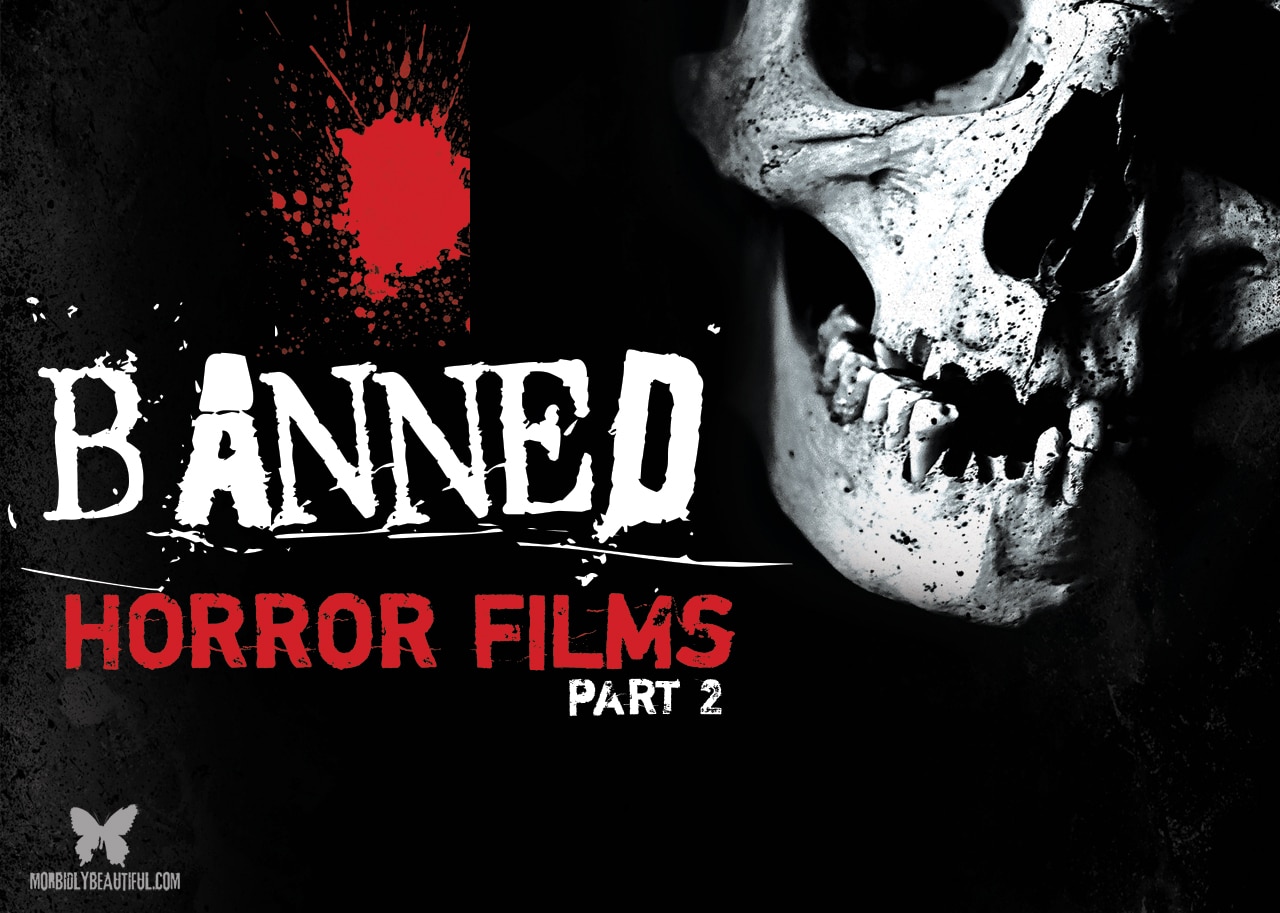
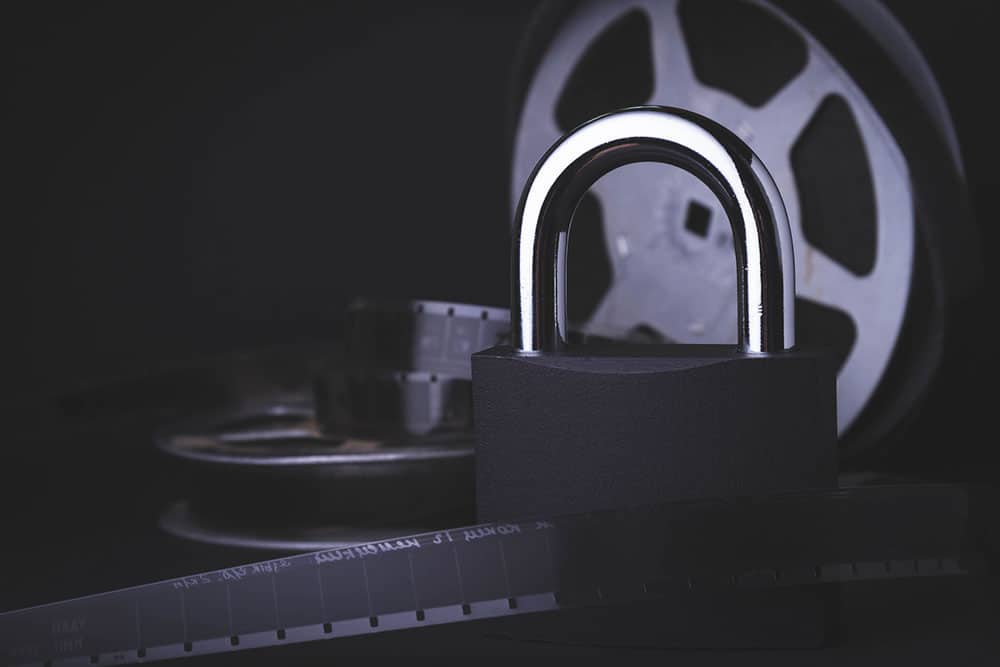

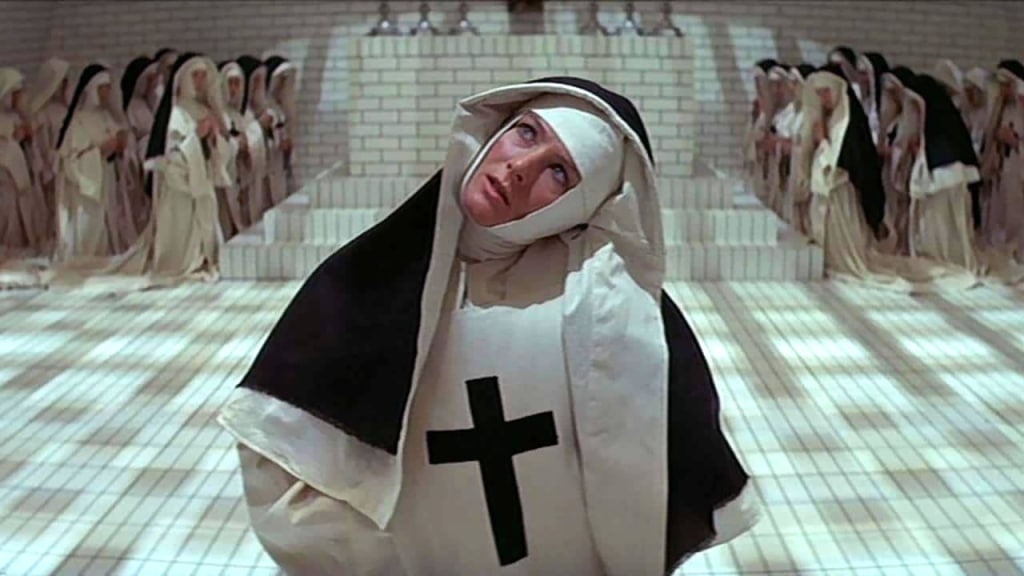


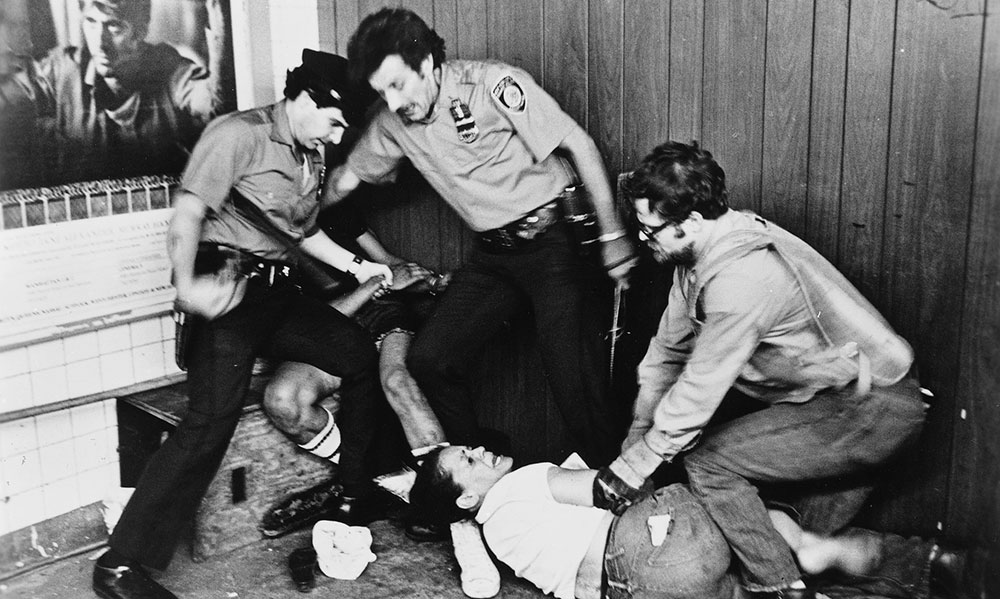
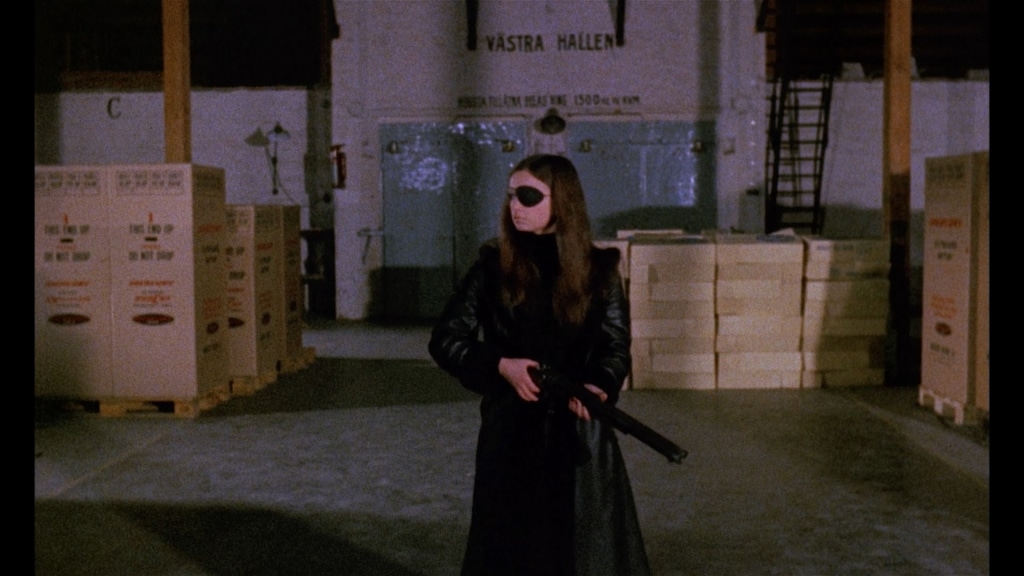
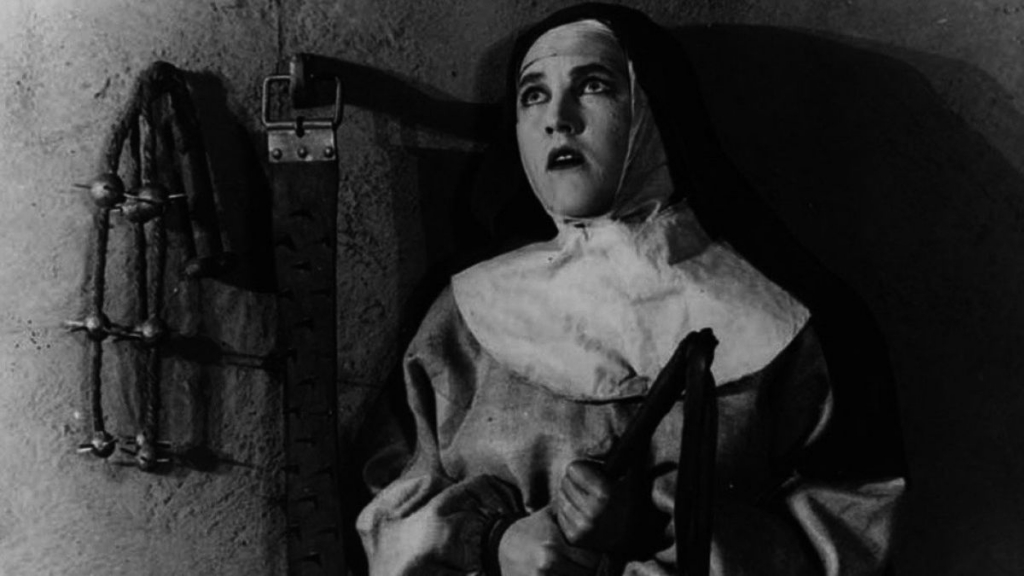
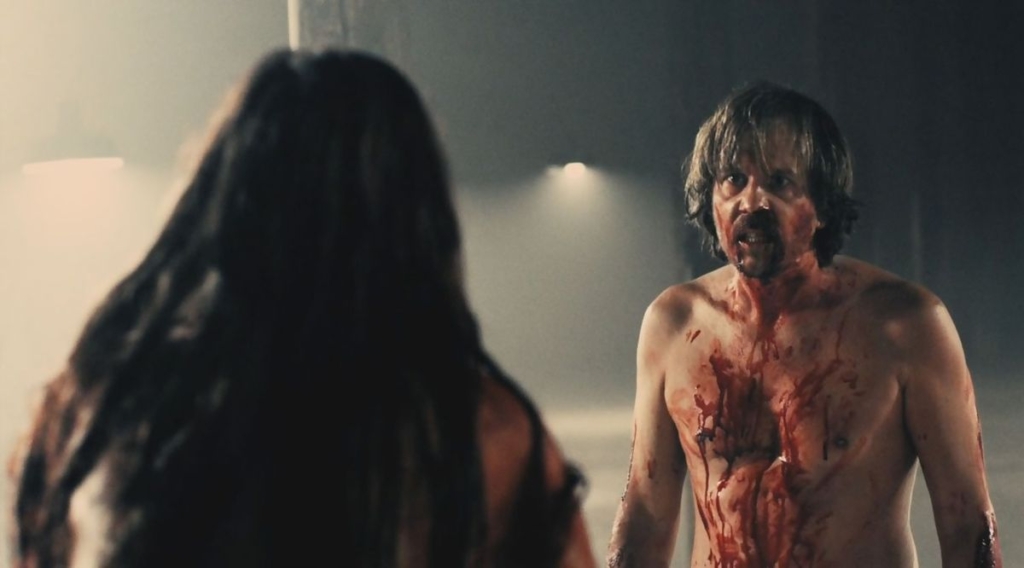
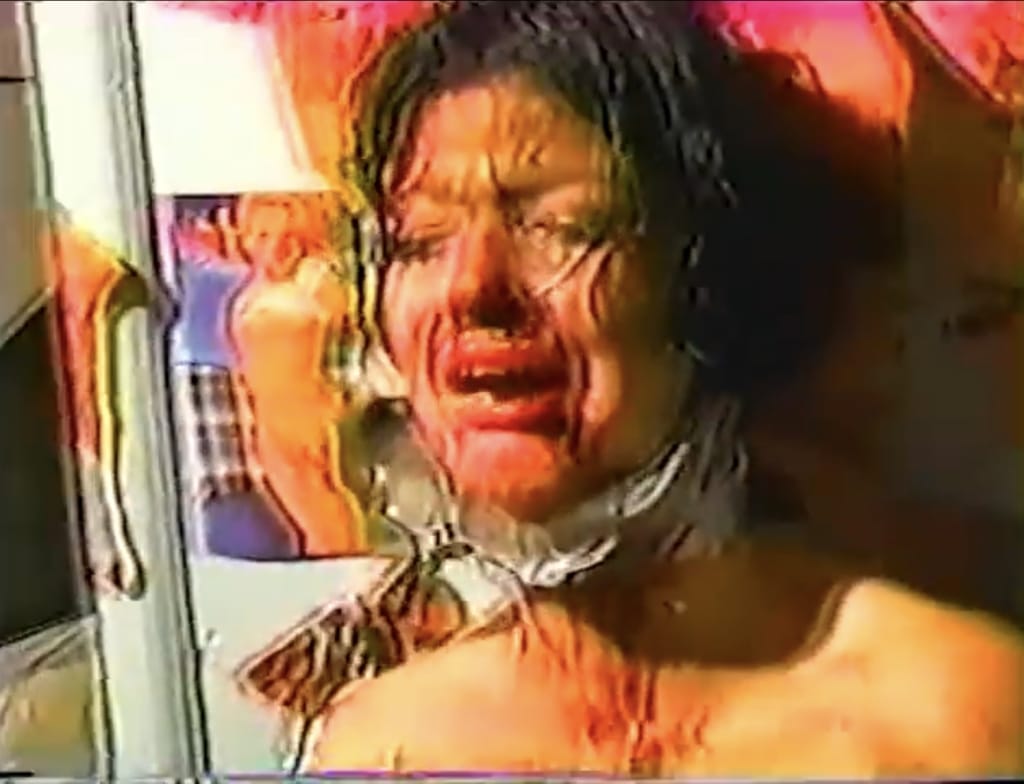
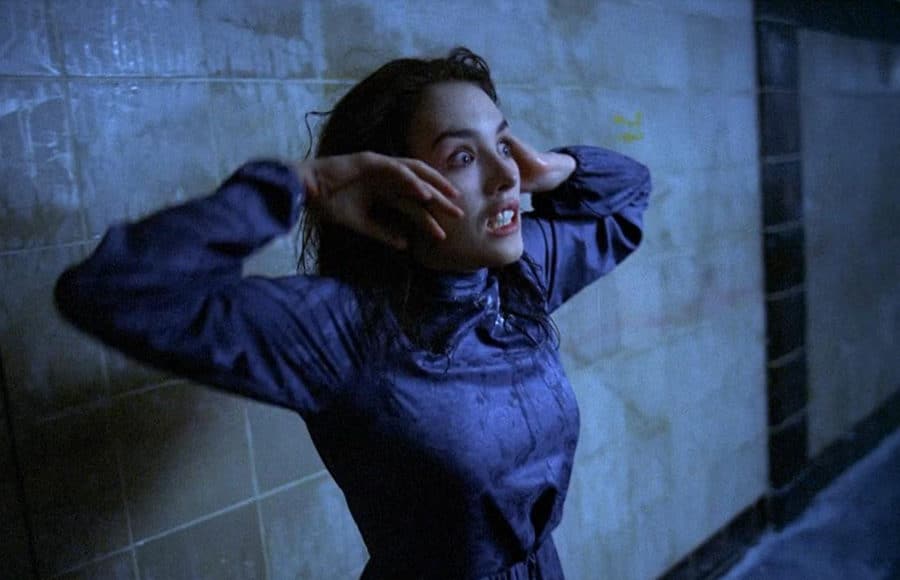
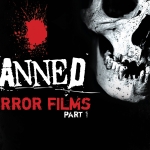
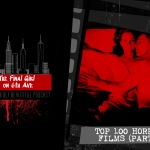









Follow Us!